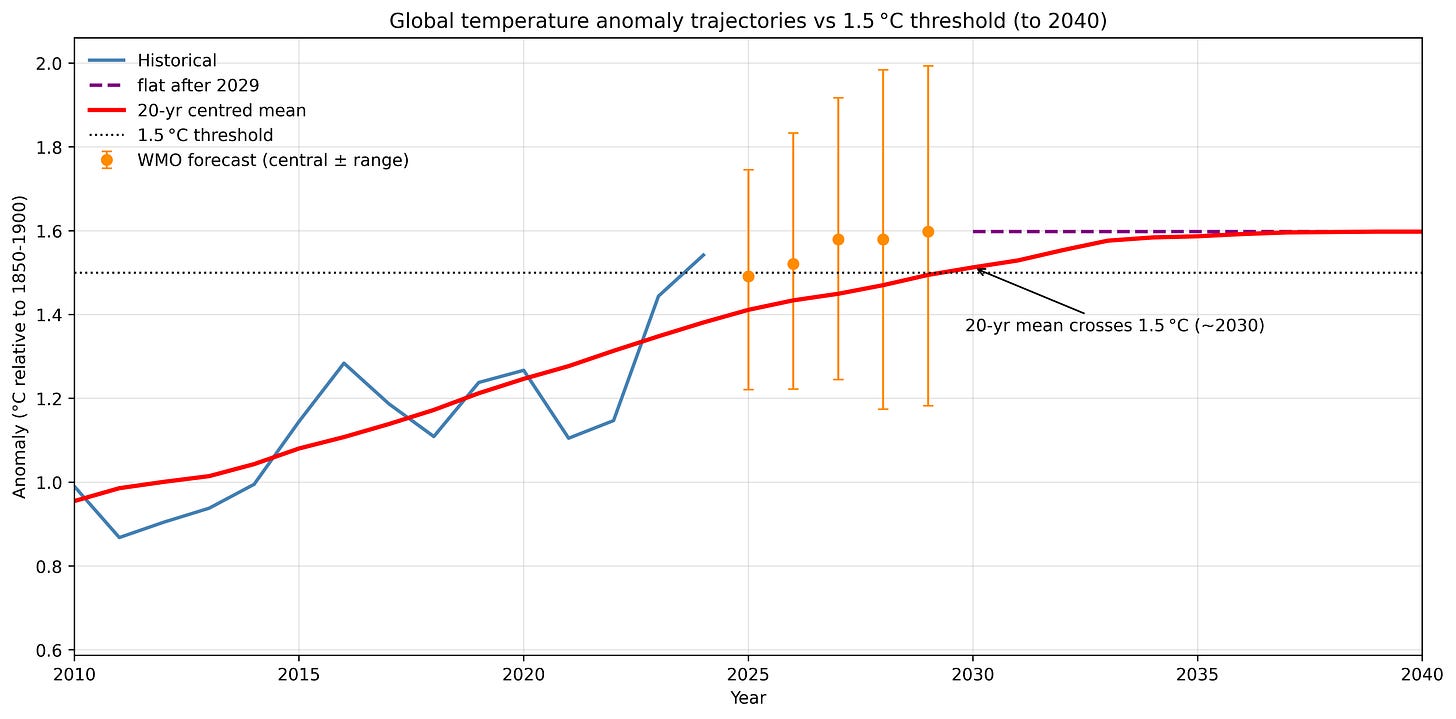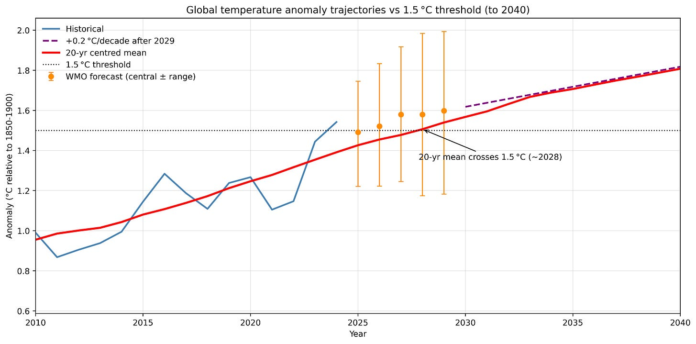What do the latest WMO temperature projections imply for 1.5C?
Posted on 30 June 2025 by Zeke Hausfather
This is a re-post from the Climate Brink
The WMO recently published their WMO Global Annual to Decadal Climate Update that covers the period from 2025 to 2029. This is a regular assessment of near-term dynamic model projections that assess both the forced climate response and short-term natural variability (e.g. ENSO and AMV).
This new update forecasts relatively high global temperatures to likely continue through 2029, with the central estimate form most years similar to what was seen in 2023 and 2024. The figure below shows the 2025-2029 forecast in blue, as well as a “hindcast” of past model performance (green) compared to observations (black).
Despite the central estimate being high, large uncertainties remain; it is hard for these near-term climate projections to firmly rule out temperatures either as low as what was experienced in 2020, or temperatures considerably higher than 2023 and 2024.
If we use the central estimates from the report, however, they would likely imply a crossing date for 1.5C (using the IPCC’s 20-year centered mean approach) that would be earlier than previously expected.
The recent IPCC AR6 report included two different estimates of crossing years for 1.5C: ScenarioMIP, which gave a best-estimate of 2031 (with a range of 2021 to 2046) under the current-policies-continue SSP2-4.5 emissions scenario, and the SSP2-4.5 Assessed Warming Projections which gave a best-estimate of 2031 (2024 to 2043).
In addition, I published an analysis in mid 2024 that combined observations and models using a recent baseline, and found a similar best-estimate exceedance date of 2030 (2028 to 2036).
If we use the WMO projections instead, and assume that global warming continues at the historical rate since 1970 of 0.2C per decade after 2029, we get an exceedance date of 2028 as shown in the figure below.
However, this depends on a pretty big set of assumptions. The uncertainty in the WMO forecast is quite large, which could easily move the exceedance date earlier or later. We might not see steady warming after 2029; natural variability could contribute to a plateauing rather than a continued warming. In that case, as shown in the figure below, we would still have an exceedance year in 2030 rather than 2028.

I personally think that flat global temperatures for a decade after 2029 is rather unlikely, and the new WMO forecast would definitely favor an earlier date the previously thought.
Its worth noting that the 2028 estimate here is a tad later than the 2027 value I mentioned in an interview with the Washington Post a few weeks back. I had yet to digitize the underlying data (which, as an aside, the WMO should really provide alongside their report!) and was relying on a Financial Times figure that incorrectly implied that the 5-year central estimate mean would be 1.6C from 2025-2029, rather than the 1.55C that is actually in the WMO report.
However, the implied exceedance year using the properly digitized values (coupled with a conservative post-2029 warming trend) still leads to a notable reduction in exceedance (2028) year compared with prior estimates (~2030).
